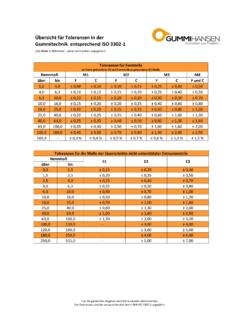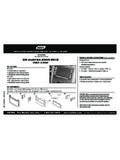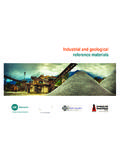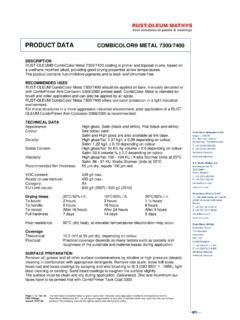Transcription of NP-ISO - insulation-supplier.com
1 - - INTERNATIONAL STANDARD NP-ISO 3302 -1 SecondFirst edition 20121996-xx07-xx15 Rubber-Tolerances for products- Part 1: Dimensional tolerances Caoutchouc -Tolerances pour produits - Partie 1: Tolerances dimensionnelles -- - - IS OJ --- --- Reference number ISO 3302 -1:1996(E) NP-ISO 3302 -1 Foreword ISO (the International Organization for Standardization) is a worldwide fed- eration of national standards bodies (ISO member bodies). The work of preparing International Standards is normally carried out through ISO technical committees. Each member body interested in a subject for which a technical committee has been established has the right to be rep- resented on that committee. International organizations. governmental and non-governmental, in liaison with ISO.
2 Also take part in the work. ISO col- laborates closely with the International Electrotechnical Commission (IEC) on all matters of electrotechnical standardization. Draft International Standards adopted by the technical committees are cir- culated to the member bodies for voting. Publication as an International Standard requires approval by at least 75 % of the member bodies casting a vote. International Standard ISO 3302 -1 was prepared by Technical Committee ISO!TC 45, Rubber and rubber products, Subcommittee SC 4, Miscel- laneous products. This edition of ISO 3302 -1 cancels and replaces ISO 3302 -1:19960, Rubber Tolerance for products - DPart 1 - Dimensional tolerances for use with products, a n d ISO 3302 -1:1996 AMD1: 2001. The amendment is incorporated and of which it constitutes a technical revision.
3 In particular in relation to table 1 (tolerances for mould- ings). ISO 3302 consists of the following parts, under the general title Rubber - Tolerances for products: Part 1: Dimensional tolerances Part 2: Geometrical tolerances ISO XXXX1996 All rights reserved. Unless otherwise specified, no part of this publci ation may be repro- duced or utilized in any form or by any means, electronic or mechanical, mcluding photo- copying and microfilm, without permission in writing from the publisher. International Organization for Standardization Case Postale 56 CH-1211 Geneve 20 Switzerland Printed in Switzerland ii NP-ISO 3302 -1 ISO Introduction Rubber products are subject to changes in their dimensions after process- ing and vulcanization. This may be due to a variety of factors, such as mould shrinkage or relaxation of die swell.
4 These changes should be determined and allowed for when designing such items as moulds and dies used in the manufacture of a given product. The closer tolerance classes outlined in this specification should not be demanded unless required by the final application and should be restricted to those dimensions deemed to be critical. The greater the degree of ac- curacy demanded, the closer the control which must be exercised during manufacture, and hence the higher the costs. When particular physical properties are required in the product, it may not always be possible to provide them in a mix which is capable of fabrication to close tolerances. lt is advisable, in these circumstances, that consul- tation should take place between the interested parties. In general, softer vulcanizates ( those of hardness below 50 IRHD - see ISO 48) need greater tolerances than harder ones.
5 Ill INTERNATIONAL STANDARD ISO NP-ISO 3302 1 Rubber -Tolerances for products - Part 1: Dimensional tolerances 1 Scope This part of ISO 3302 specifies classes of dimensional tolerances, and their values, for moulded, extruded and calendared solid rubber products. The relevant test methods necessary for the establishment of compliance with this International Standard are also specified. The tolerances are primarily intended for use with vul- canized rubber but may also be suitable for products made of thermoplastic rubbers. This part of ISO 3302 does not apply to precision to- roidal sealing rings or to calendared composite prod- ucts such as rubber-coated fabrics or products where a rubber coating is applied by the process of topping or skim coating.
6 2 Normative references The following standards contain provisions which, through reference in this text, constitute provisions of this part of ISO 3302 . At the time of publication, the editions indicated were valid. All standards are subject to revision, and parties to agreements based on this part of ISO 3302 are encouraged to investigate the possibility of applying the most recent editions of the standards listed below. Members of IEC and ISO maintain registers of currently valid International Stan- dards. ISO 3:1973, Preferred numbers - Series of preferred numbers. ISO 48:1994, Rubber, vulcanized or thermoplastic - Determination of hardness (hardness between 70 IRHD and 100 IRHD). ISO 471:1995, Rubber - Temperatures, humidities and times for conditioning and testing.
7 ISO 2230:1973, Vulcanized rubber - Guide to stor- age. ISO 4648:1991, Rubber, vulcanized or thermoplas- tic - Determination of dimensions of test pieces and products for test purposes. 3 Measurement of dimensions General For solid products, measurements of dimensions shall not be made until 16 h have elapsed after vulcaniz- ation, this minimum time being extended to 72 h in cases of dispute. Measurements shall be completed within 3 months after the date of despatch to the pur- chaser or before the product is put into use, which- ever is the shorter time. Measurements shall be made at standard temperature, after conditioning (see ISO 471). Care shall be taken to ensure that the products are not subjected to adverse storage conditions (see ISO 2230) and that they are not distorted during measurement.
8 1 NP-ISO 3302 1 ISO Test instruments Depending on the circumstances, measure- ments shall be made using one or more of the follow- ing types of instrument: For solid products, a micrometer dial gauge, the foot of which shall exert a pressure of 22 kPa 5 kPa for rubber of hardness equal to or greater than 35 IRHD or of 10 kPa 2 kPa for rubber of hardness less than 35 IRHD (see ISO 4648 and ISO 48). A suitable optical measuring instrument. Fixed gauges, for upper and lower limits ap- propriate to the dimensions being measured. Other devices, including tape measures (with or without vernier). sliding calipers and microm- eter calipers. All instruments shall be capable of measuring the dimension with an error within the tolerances specified.
9 In all measurements intended to be compara- tive, the same measuring device shall be used. 4 Tolerances For the purposes of this part of ISO 3302 , nominal di- mensions and tolerances are based on the R 5 and R 10 series of preferred numbers respectively (see ISO 3). The dimensions of certain parameters of a particular product may not all require the application of the same class of tolerance. Dimensions of different parameters of the product on the same drawing may have differ- ent class tolerances applied to them. When drawings do not indicate a required class tolerance, the largest tolerance given in the related table shall be applied. NOTES 1 Tolerances that are specified in this part of ISO 3302 in terms of a positive value and an equal negative value ( 0,35) may also be expressed in terms of unequal positive and negative values, providing the difference between the two values remains the same.
10 For example, 0,35 may also be expressed as + or + or +0 etc. - 0,5 - 0 - 0,7 5 Mouldings General The dimensional tolerances stated in this part of ISO 3302 may be wider than those used in some other engineering practice. The following consider- ations apply: a) All rubber shows some shrinkage when cooled after moulding, and allowance for this is made in the mould design. The amount of shrinkage is de- pendent on the rubber type and the mix used, but also varies from batch to batch of the same mix. Products made from some silicone rubbers, fluorocarbon elastomers and other special- purpose elastomers are subject to larger shrink- ages; therefore tolerance classes M1 and M2 (see ) are very difficult to obtain with these rubbers.






